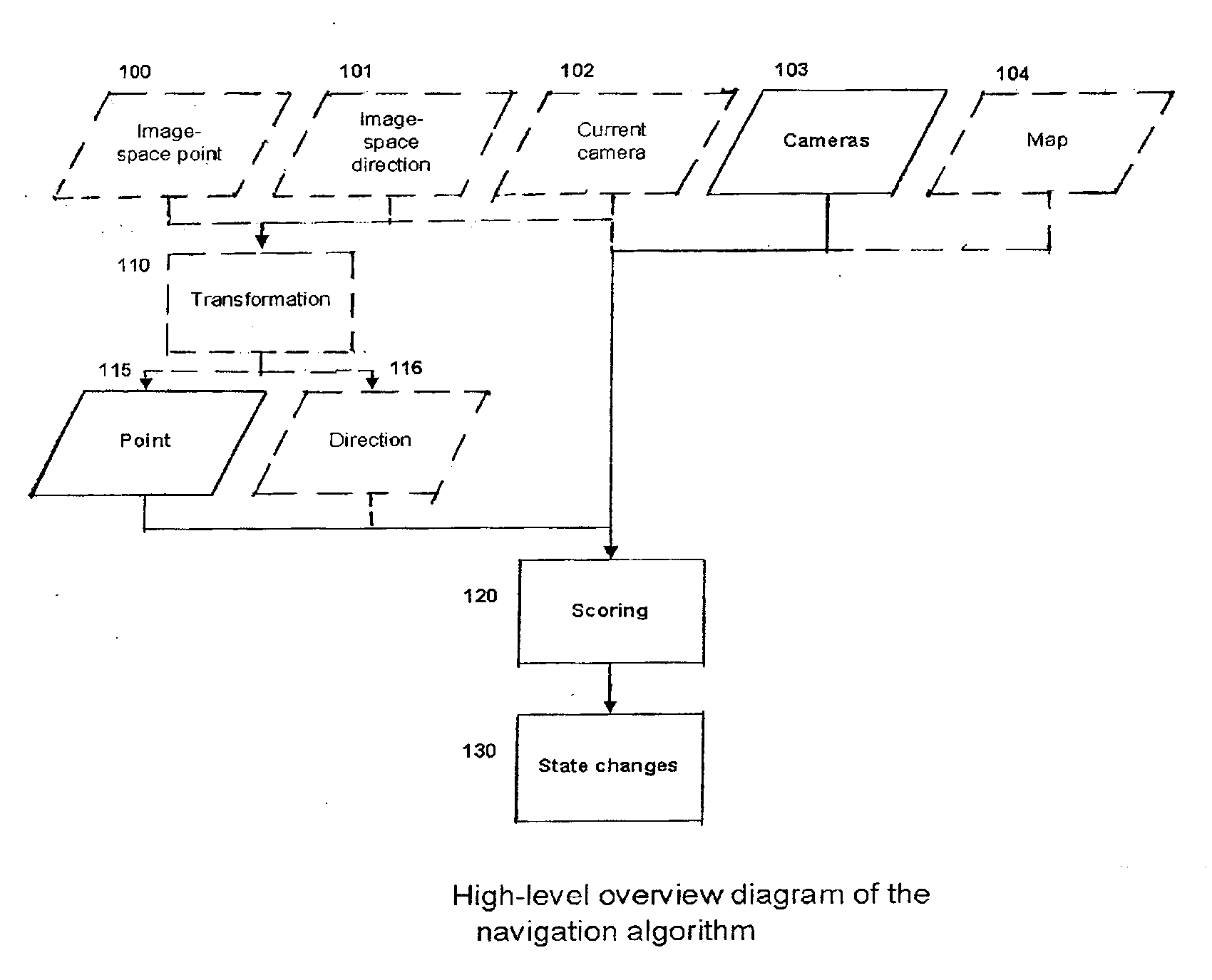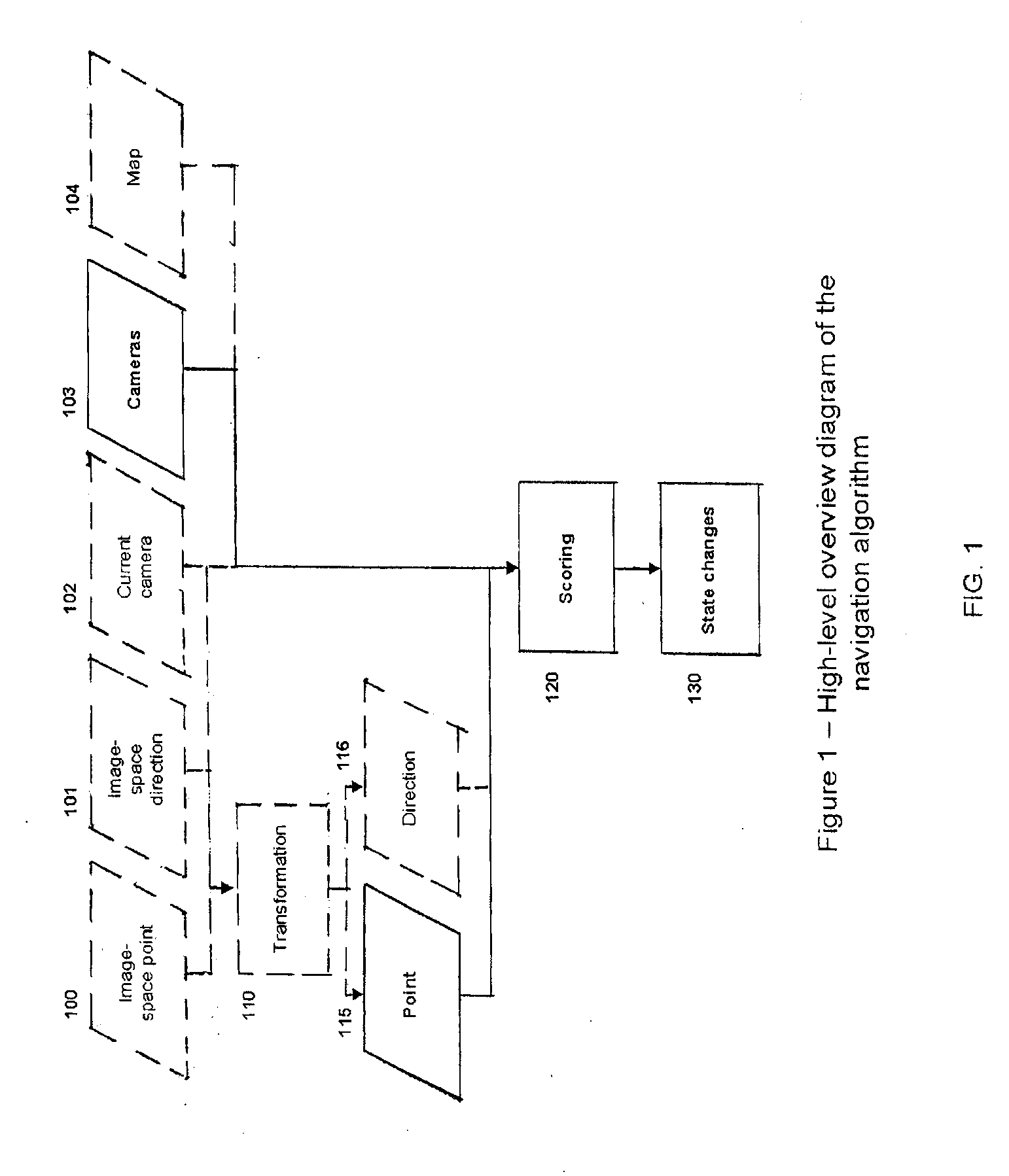In video surveillance, following a suspect
roaming across multiple cameras in a large indoor or outdoor environment can be very challenging.
Remembering what each camera can see takes a significant effort.
Tracking a suspect across a hallway with multiple branches offers very little margin for error and takes most of the concentration of a security operator, making it hard to think about high-level questions such as “does this suspect present a real
threat and if so, what is this suspect trying to achieve?” and preparing a response (e.g. calling a
security guard on site).
When switching to a PTZ camera in a traditional surveillance solution, an operator must then manually move it (e.g. by selecting a preset from a
list, or using a
joystick),
wasting many precious seconds during which the suspect may turn a corner and get out of
sight.
Using traditional solutions, recovering a suspect that gets out of
sight is highly problematic.
It may take minutes for the suspect to reappear.
PTZ cameras can be redirected, but because a human can at best look at a handful of cameras at once, in practice operators have a very hard time recovering suspects that got out of
sight.
All of these problems are compounded by factors like stress and fatigue.
The margin for error when following an armed and dangerous suspect is extremely thin, and security guards often go through hours of monotony making them prone to mistakes and inattention.
Using a map can help to identify possible cameras of interest, but constantly switching attention to / from videos / map distracts operators and increases the chance to miss suspicious activity.
When switching cameras, humans also tend to oversimplify the problem and rely on simple cues like
geographic proximity, i.e. cameras that appear close to the last seen position of the suspect as seen in the map in 2D.
Such simple criteria are not optimal to identify relevant cameras.
They do not work reliably when the camera coverage is very sparse and orientations differ significantly, the common
scenario in video surveillance applications.
They also do not explicitly
handle occluders like walls.
They use overly simplistic solutions such as presenting up-down-left-right buttons to the operator, which once clicked, switch to other cameras in a hard-coded fashion.
In practice, these techniques are of limited use.
For instance, they do not work when multiple hallway branches are visible, they do not take full
advantage of PTZ camera capabilities, they do not work with panoramic cameras, they require extensive setup time, and they do not
handle cameras that translate (e.g. in an
elevator).
There are automated techniques to track suspects across one more multiple cameras, but they all suffer from many drawbacks.
This solution, while occasionally reliable in simple scenarios like a single person moving without
occlusion in front of a camera, does not
handle transition across multiple cameras,
crowds, objects moving naturally (e.g. water, trees affected by the wind), etc.
More complex video analytics methods try to separate the suspicious person or object from the rest of the movement, but all known techniques are unreliable in complex real-life
scenario, e.g. large number of people walking in multiple directions in a possibly dynamic environment (
snow, rain,
smoke).
These techniques all suffer from limitations.
Facial recognition techniques require a good view of the face and no known method is perfect, so false negatives and false positives are very frequent even in ideal scenarios.
None of these solutions provide much control to the operator when he desires to navigate without actually tracking a specific individual, to simply be aware of nearby activity.
A related challenge is the effective and intuitive monitoring of a large
outdoor area.
Monitoring a large
outdoor area (e.g. dozens or hundreds of cameras surrounding a facility) is challenging because each camera only gives limited a point of view.
Operators often suffer from a “
tunnel effect” because they only see a small amount of information at a time.
Most 2D video surveillance solutions used in practice do not provide sufficient spatial context, i.e. it is not clear how each camera is related to others.
For instance, if an individual in a crowd is pointing at another person visible in another camera, it is very hard for a human to immediately grasp who the person is pointing at, because both cameras are presented separately and traditional solutions do not present an intuitive mapping between the two.
One limitation to this 3D fusion approach is that PTZ cameras may not be pointing in the optimal locations.
The approach is limited because each PTZ camera is handled independently.
Occasionally, one or some of these cameras are broken, obscured (e.g. by cargo ship, rain, sun glare), disconnected or otherwise unusable.
The problem is that, at best, it may take minutes for a human to identify the problem and address it.
In practice, in facilities that have lots of cameras and more lax procedures, it is more likely that it will take days or even weeks for the problem to be identified and addressed.
 Login to View More
Login to View More  Login to View More
Login to View More 


